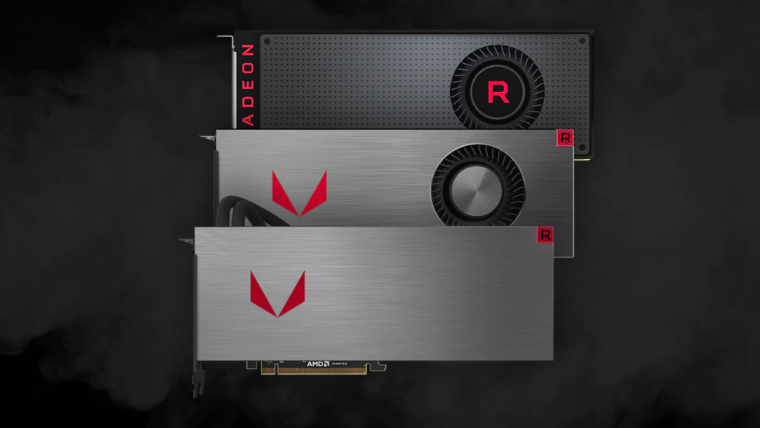AMD RX Vega 64 runs Indiana Jones and the Great Circle at well over 30FPS in Linux with RADV driver
RADV features baked-in ray-tracing software emulation, enabling ray-tracing functionality on AMD GPUs dating back to first-generation GCN GPUs.

Ray tracing has long been "proven" only to be playable on GPUs boasting hardware-accelerated ray-tracing capabilities. However, AMD GPUs dating back to the first GCN-based graphics cards (including GPUs such as the Radeon HD 7970) have been capable of running ray tracing for a while through software emulation. Clewless Clay on YouTube brought this fact to our attention, and several sources demonstrate ray-tracing on older AMD GPUs, including a Vega 64 graphics card running Indiana Jones and the Great Circle at well over 30 FPS.
The software-based ray-tracing implementation offers surprisingly potent performance. One YouTuber fittingly named "no RTX no problem" shared a video of an RX Vega 64 running Indiana Jones and the Great Circle in Linux Fedora 41 at 1080p with 50% resolution scaling (720p internal resolution) with medium graphics settings at playable frame rates. Frame rates hovered anywhere between 50 to 60 FPS average.
Another YouTuber, BK Benchmark, showed an RX 5700 XT running the same game with identical settings but at native 1080P resolution (100% scaling). The newer GPU demonstrated significantly better performance, hovering in the 70 to 80 FPS range on average.
Ray tracing emulation exists through Linux's RADV driver, an open-source counterpart to AMD's official AMDVLK reference Linux driver (significantly expanding AMD GPU capabilities in Linux). Ray tracing support on non-RT supported AMD GPUs was allegedly the brainchild of Joshua Ashton, known for his work on Proton and DXVK. Phoronix reported that adapting AMD's Linux-based RADV driver to run emulated RT was not difficult for the developer. Ashton's RADV ray tracing emulation is achieved by emulating AMD BVH intersection instructions in software.
Joshua Ashton allegedly started experimenting with RT emulation support in 2021, adding support for architectures dating back to GCN 1.0 in 2022. By 2023, his RT emulation development reached full stability, achieving a "100% pass rate" (according to Phoronix). The feature can even be activated on RDNA2 and RDNA3 for benchmarking purposes using the "emulate_rt" debug option.
Linux's RT-emulation on AMD GPUs is not a competitive solution against newer GPUs sporting hardware-baked ray tracing acceleration. However, the technology has major implications for making modern games playable on older graphics cards. Indiana Jones and the Great Circle is a great example, being one of the first (if not the first) titles to require a ray-tracing capable graphics card. If this trend continues, we can expect future titles to boast the same requirement. Emulating ray tracing will be the only way to make these future games playable on non-RT accelerated GPUs, assuming the ray-traced lighting in future games can be tuned down to playable levels.
However, the biggest hurdle of this RT-emulation implementation is that it only supports Linux operating systems, being an open-source Linux-specific driver. Apparently, there is no work being done to bring such a feature to Windows 10 or Windows 11 (in an official or open-source manner), and there is no work being done to offer this capability on Nvidia GTX graphics cards, limiting its functionality to the niche group of users running Linux on pre-RDNA2-based AMD graphics cards.
Get Tom's Hardware's best news and in-depth reviews, straight to your inbox.

Aaron Klotz is a contributing writer for Tom’s Hardware, covering news related to computer hardware such as CPUs, and graphics cards.
-
artk2219 It would be interesting to see if this could be ported to Windows,maybe part of the Nimez drivers or something. It would allow some people using older cards the ability to play these newer games that require ray tracing, even if its not at the highest settings.Reply -
ezst036 This, right here folks, is an example of why Linux is the future of gaming. .... its why Valve is so heavily invested in Linux.Reply
No corporate hold-backs. No Microsoft limitations. No driver cut-offs. No more artificial planned obsolescence. A modder can easily do what a modder wants to do, compared to its harder to do things on locked up platforms.
We don't need the corporations. The corporations need us. -
Thunder64 Replyezst036 said:We don't need the corporations. The corporations need us.
It's symbiotic. Try posting that without a corporation. -
edzieba ReplyRay tracing has long been "proven" only to be playable on GPUs boasting hardware-accelerated ray-tracing capabilities.
Proven by who? Real-time ray-tracing predates hardware graphics accelerators. -
MooseMuffin Reply
Not sure what this has to do with Microsoft, seems like AMD could open source their Windows drivers if they wanted to.ezst036 said:This, right here folks, is an example of why Linux is the future of gaming. .... its why Valve is so heavily invested in Linux.
No corporate hold-backs. No Microsoft limitations. No driver cut-offs. No more artificial planned obsolescence. A modder can easily do what a modder wants to do, compared to its harder to do things on locked up platforms.
We don't need the corporations. The corporations need us. -
salgado18 Reply
Could they? Considering that AMD drivers in Linux are open source but Nvidia's are not, there may be an external reason for proprietary drivers on Windows. Maybe they don't get official validation if open source?MooseMuffin said:Not sure what this has to do with Microsoft, seems like AMD could open source their Windows drivers if they wanted to. -
ClewlessClay I never imagined that my video would be picked up for a Toms Hardware article! I knew this was something more people needed to know about though. Thank you for spreading the word/vid! Also like and subscribe :pReply -
mitch074 emulate_rt was needed for me to run Black Myth:Wukong (and its benchmark tool) on both a Vega 8 iGPU and my old Polaris (RX480 8 Gb) - it wouldn't load in DX12 mode without it.Reply
Enabling RT at its lowest setting turned it into a slideshow on the iGPU, and crashed the RX480. But, it allowed me to actually play it on my older rigs.
Of course, running it in 720p 25% FSR looked awful, but kudos to the devs, it was actually both playable and visible. I merely got strong Tomb Raider (VGA) vibes... -
OwningYou Reply
Oh yes, like and subscribe to you for content that you literally stole. When Indiana Jones released, another YouTuber made a video about ray tracing emulation on Vega & I know for a fact that is where you got the content for your video from. You didn't even credit the guy, Toms Hardware failed to credit him too. #THEFTClewlessClay said:I never imagined that my video would be picked up for a Toms Hardware article! I knew this was something more people needed to know about though. Thank you for spreading the word/vid! Also like and subscribe :p -
ClewlessClay Reply
I mean yeah I link to it in the description and commentsOwningYou said:Oh yes, like and subscribe to you for content that you literally stole. When Indiana Jones released, another YouTuber made a video about ray tracing emulation on Vega & I know for a fact that is where you got the content for your video from. You didn't even credit the guy, Toms Hardware failed to credit him too. #THEFT